I have always used 1 pound per gallon and if it ain't broke don't fix it.
Navigation
Install the app
How to install the app on iOS
Follow along with the video below to see how to install our site as a web app on your home screen.
Note: This feature may not be available in some browsers.
More options
You are using an out of date browser. It may not display this or other websites correctly.
You should upgrade or use an alternative browser.
You should upgrade or use an alternative browser.
LIVE ROCK RULES: Should the rule for live rock be changed.....again?
- QUESTION OF THE DAY
- Thread starter revhtree
- Start date
- Tagged users None
Oh my.... you broke the rule of having your scape to high and not enough room for growth. (myth)I like most Reef Aquariums but our little bit of Reef look less and less like real ocean reefs. Today a lot have more in common with postage stamp collections than the Great Barrier Reef. For me it’s not about quantity of live rock but about how it’s deployed. For me the best Aquascapes attempt to capture the spirit of the reef - they aren’t just about collecting as many Zoa varieties as possible OR as many Acropora types as possible. Attached is my last Aquascape; I’d be keen to hear your views.
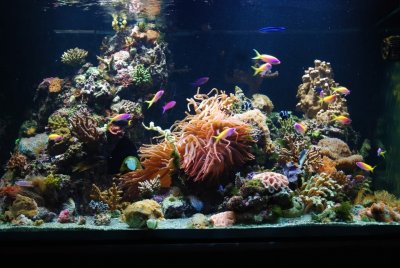
well done.
- Joined
- Oct 14, 2019
- Messages
- 12
- Reaction score
- 13
I like most Reef Aquariums but our little bit of Reef look less and less like real ocean reefs. Today a lot have more in common with postage stamp collections than the Great Barrier Reef. For me it’s not about quantity of live rock but about how it’s deployed. For me the best Aquascapes attempt to capture the spirit of the reef - they aren’t just about collecting as many Zoa varieties as possible OR as many Acropora types as possible. Attached is my last Aquascape; I’d be keen to hear your views.

I'm sure a lot of people would now say too much rock. I don't see large fish so I think this looks awesome. More like you'd see on the reef, as you stated, less like what tanks are morphing into today. Very nice.
I use almost 100lbs of live rock in my 75. Yes , it does form a "wall." This rock was placed in such a fashion as to allow for many pass,throughs, gaps, caves etc. I then place my corals on the rock to make it look like they were supposed to be there. My fish have plenty of hiding places abd my CUC does as well.
Some of the comments suggested that there is "something wrong" with its appearance.
Obviously I disagree.
You are free and encouraged to have a minimalist style and I will pursue my style as well.
Since I have an abondance of porous live rock, I need little to none auxiliary filtration equipment.
The beauty of this hobby is to each their own as that's what really matters.
Some of the comments suggested that there is "something wrong" with its appearance.
Obviously I disagree.
You are free and encouraged to have a minimalist style and I will pursue my style as well.
Since I have an abondance of porous live rock, I need little to none auxiliary filtration equipment.
The beauty of this hobby is to each their own as that's what really matters.
I've seen very little evidence at this point that live rock surface area is a limiting factor for bioload in most tanks.
We've all seen those big barebottom tanks with 9 million fish and very little rock who still need to dose phosphates and nitrates to keep corals colored up. I think in mature tanks, coral processes more nitrate and phosphate than rock does.
this is my thought as well. The question isn’t about dry vs ocean rock but using enough live rock and I don’t think I have ever heard of someone having die offs in their properly cycled tank due to ammonia build up from lack of bacterial surface area.
I take the question as enough rock, and yes if not too much. I have seen pics and in person tanks with so much rock there is hardly any space for the fish to swim
This is amazing! Will you marry me? Lol!I like most Reef Aquariums but our little bit of Reef look less and less like real ocean reefs. Today a lot have more in common with postage stamp collections than the Great Barrier Reef. For me it’s not about quantity of live rock but about how it’s deployed. For me the best Aquascapes attempt to capture the spirit of the reef - they aren’t just about collecting as many Zoa varieties as possible OR as many Acropora types as possible. Attached is my last Aquascape; I’d be keen to hear your views.

Minimalism with bare bottom. = I don't really keep anything but don't the blue lights look nice?
60 pounds of Rock wall on back glass with a 4 inch fine sand bed in a 40 B = Man can I grow GSP or what!? Wait. I mean GHA! Well it begins with a 'G'
If it gets the job done, does it matter? What happened to artistic license? Do there really have to be rules for keeping .. Rocks?
60 pounds of Rock wall on back glass with a 4 inch fine sand bed in a 40 B = Man can I grow GSP or what!? Wait. I mean GHA! Well it begins with a 'G'
If it gets the job done, does it matter? What happened to artistic license? Do there really have to be rules for keeping .. Rocks?
1
154162
Guest
View BadgesI think it’s more about LIVE rock and biodiversity, rather than having enough beneficial bacteria (people can always add bricks or media) and granted fish need a safe environment too
I think as a beginner to the saltwater, I read / was told more to use dry rock so I wouldn’t get nasty hitchhikers and start a cycle with ammonia source. it sounds appealing to take away the headache of parasites, and be ocean conscious with options, and I did that.
Now that I’m cycled have fish and added my first coral, and I’ve research so much more since, I read / realise people are having algae and Dino problems with dry rock... and I’m also thinking I need critters, good ones! Maybe I skipped something there and should have found some live rock and added all thes benificial critters to make it less sterile, more of a cube of life...
was speaking to a reefer who said most of the time the good stuff will outweigh the bad stuff... might be a bit late but I think I will add some live rock from a system
Anyway was talking about here on this thread!

 www.reef2reef.com
www.reef2reef.com
I think as a beginner to the saltwater, I read / was told more to use dry rock so I wouldn’t get nasty hitchhikers and start a cycle with ammonia source. it sounds appealing to take away the headache of parasites, and be ocean conscious with options, and I did that.
Now that I’m cycled have fish and added my first coral, and I’ve research so much more since, I read / realise people are having algae and Dino problems with dry rock... and I’m also thinking I need critters, good ones! Maybe I skipped something there and should have found some live rock and added all thes benificial critters to make it less sterile, more of a cube of life...
was speaking to a reefer who said most of the time the good stuff will outweigh the bad stuff... might be a bit late but I think I will add some live rock from a system
Anyway was talking about here on this thread!

Adding biodiversity to a “sterile” tank
I was wondering how to add some biodiversity to my tank, right now it’s just Fiji pink “live” sand and some CaribSea liferock and a clownfish... I will be adding CUC when I get some algae going (lights have only been on for 2 weeks when clown was added after the cycle) I realise there’s not...
 www.reef2reef.com
www.reef2reef.com
old schooler here, I'll step on toes  So of course we can only speak to our own experiences definitively, but I've watched a lot on this forum as well as others like youtube etc.. This is relevant to the gap in the hobby experience that I went thru from about 2005 to current date. I'm setting up a new tank now. Holy crap ppl... what are you doing with your tanks? I come from an age where digital sharing was a giant PIA and it was only a select few who were on the bulletin boards, IIRC, news groups and most recently at the time (reef central, now a dinosaur). Reaching out was plain hard unless you were in an extremely populated area full of active reefers with an active club.
So of course we can only speak to our own experiences definitively, but I've watched a lot on this forum as well as others like youtube etc.. This is relevant to the gap in the hobby experience that I went thru from about 2005 to current date. I'm setting up a new tank now. Holy crap ppl... what are you doing with your tanks? I come from an age where digital sharing was a giant PIA and it was only a select few who were on the bulletin boards, IIRC, news groups and most recently at the time (reef central, now a dinosaur). Reaching out was plain hard unless you were in an extremely populated area full of active reefers with an active club.
The common theme I tend to notice here (i do not speak in absolutes) is tank crashes and issues due to dio's, cyano, and macro algae plagues, whereas this was less of a struggle when bio diversity from live rock was king and dead rock was just being talked about. While fair enough those issues have always been a challenge to some extent, I perceive that they are far more common because of the trend towards dry/dead rock and the lack of bacterial diversity introduced and perpetuated from live rock commonly introduced by live rock in the past. My own experience reinforces this. Diano-what?? Yes i had the occasional maco algae bloom but shame on my bad skills... one cyano bloom in 6 years and that's cuz i got lazy and had it coming,(i.e. i could exactly determine what I let get out of control) not because it's mystery.
This seemingly unwillingness to deal with and overcome today's perceived unwanted hitchhikers and pests (are they really all?) has caused a misunderstood swing in the wrong direction (like current events hahaha). Sadly, often history repeatedly demonstrates that people often ignore the lessons history teaches us. Technology is great and I embrace it, but it does most often not redefine principles but introduces efficiency. Unfortunately, we are trending in the direction of embracing technology to the point we sacrifice what's easy in place of what's right. This is of course my opinion, and I don't think I'm the last word on this. You're free to disagree of course, but he asked for opinions so...
In case it wasn't clear, live rock, live rock, live rock!
I think this is a great topic, I'd love to hear everyone else's experience
The common theme I tend to notice here (i do not speak in absolutes) is tank crashes and issues due to dio's, cyano, and macro algae plagues, whereas this was less of a struggle when bio diversity from live rock was king and dead rock was just being talked about. While fair enough those issues have always been a challenge to some extent, I perceive that they are far more common because of the trend towards dry/dead rock and the lack of bacterial diversity introduced and perpetuated from live rock commonly introduced by live rock in the past. My own experience reinforces this. Diano-what?? Yes i had the occasional maco algae bloom but shame on my bad skills... one cyano bloom in 6 years and that's cuz i got lazy and had it coming,(i.e. i could exactly determine what I let get out of control) not because it's mystery.
This seemingly unwillingness to deal with and overcome today's perceived unwanted hitchhikers and pests (are they really all?) has caused a misunderstood swing in the wrong direction (like current events hahaha). Sadly, often history repeatedly demonstrates that people often ignore the lessons history teaches us. Technology is great and I embrace it, but it does most often not redefine principles but introduces efficiency. Unfortunately, we are trending in the direction of embracing technology to the point we sacrifice what's easy in place of what's right. This is of course my opinion, and I don't think I'm the last word on this. You're free to disagree of course, but he asked for opinions so...
In case it wasn't clear, live rock, live rock, live rock!
I think this is a great topic, I'd love to hear everyone else's experience
Last edited:
totally agree, also I think it was wwc that was experimenting with growing corals on live rock instad of racks. they were seeing better growth. we may underestimate the amount of bacteria etc that our corals feed on.My opinion is that you only need enough rock for every fish to be able to hide or have a sleeping spot if not enough you will have stress.
There are several different types of tanks. Some people want a tank that mimics a natural looking reef others like the picture posted with this initial thread are a work of art. What I desired with my tank is a tank full of bright and neon colored corals fish and inverts. This is what I like and put in my tank. There is no right or wrong way for how a reef should look considering there is nothing particularly natural about water in a glass box in our homeI like most Reef Aquariums but our little bit of Reef look less and less like real ocean reefs. Today a lot have more in common with postage stamp collections than the Great Barrier Reef. For me it’s not about quantity of live rock but about how it’s deployed. For me the best Aquascapes attempt to capture the spirit of the reef - they aren’t just about collecting as many Zoa varieties as possible OR as many Acropora types as possible. Attached is my last Aquascape; I’d be keen to hear your views.

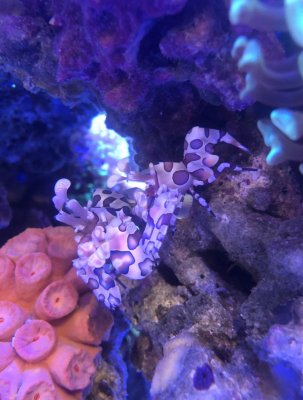
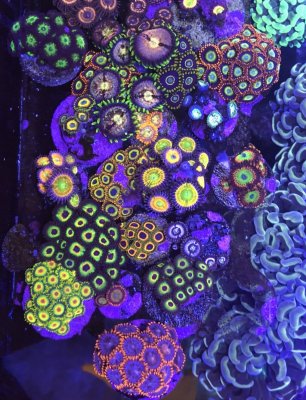
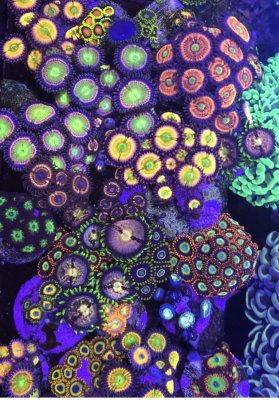
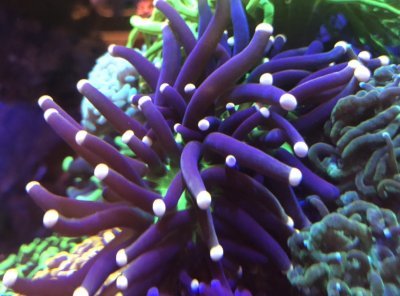
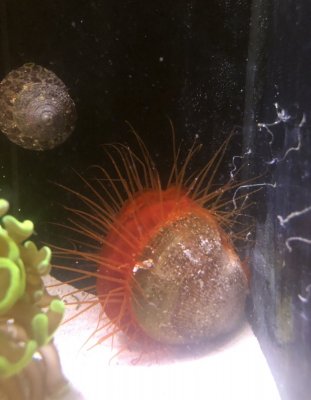
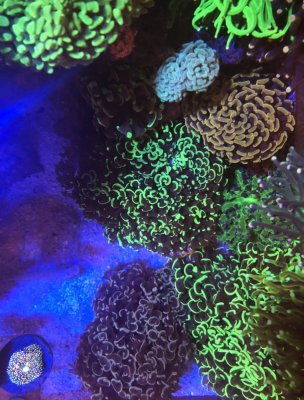
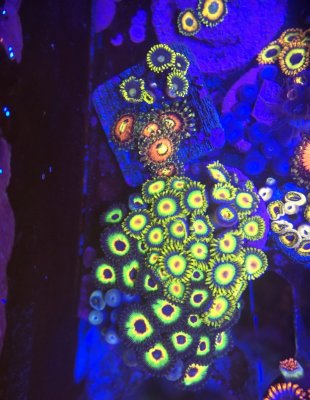
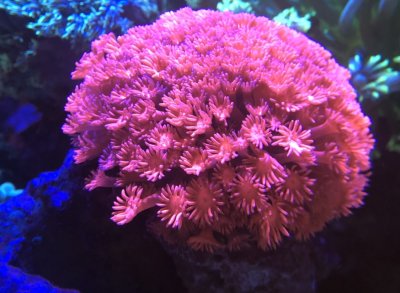
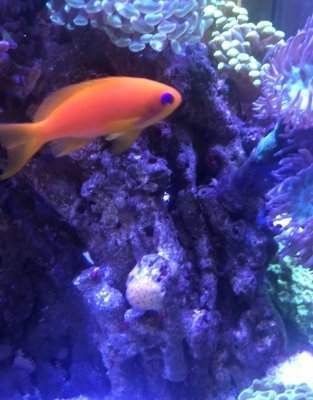
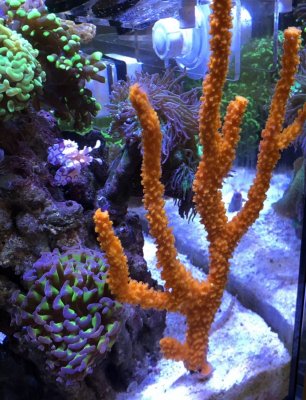
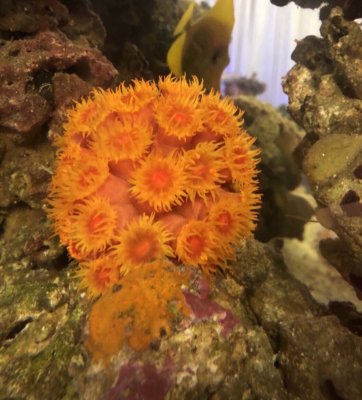
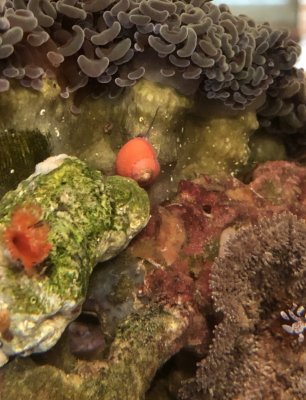
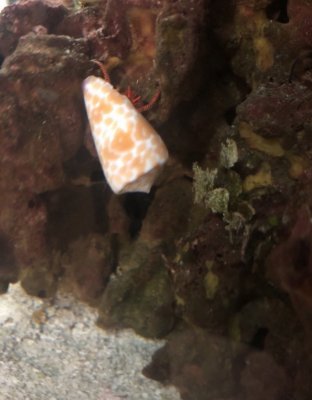
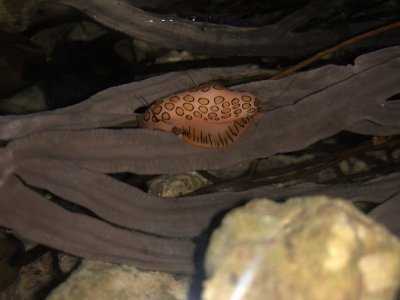
Last edited:
I see a lot of local animals I see diving here in South Florida. How long has that flame scallop lasted?There are several different types of tanks. Some people want a tank that mimics a natural looking reef others like the picture posted with this initial thread are a work of art. What I desired with my tank is a tank full of bright and neon colored corals fish and inverts. This is what I like and put in my tank. There is no right or wrong way for how a reef should look considering there is nothing particularly natural about water in a glass box in our home














Do you have to keep certain corals replenished for that flamingo snail? I usually see them on sea fans and certain gorgonians.
Q1. Are most hobbyists using enough live rock these days and what are your thoughts?
A. 1995 me is advised to use 2lbs per gallon of live rock. I'm new to the hobby and I know less than nothing. I head the recommendation, spend my life savings (about $3 at the time...), and buy a bunch of live rock. I butcher corals left and right because I'm ignorant to everything but salinity.
Q2. Do you have any "rules" for live rock when it comes to your reef tank?
A. 2015 me uses dry rock with a single piece of Fiji live to seed a new tank. I use as much as I find visually appealing and that's it (roughly 50/50 mix of rock to negative space in the sand). I still butcher corals even though I know lots more, I'm still ignorant to much. After a couple of years, I have a nice SPS tank that is doing great so I decide to tear it down... 2019 me sets up another tank and I use even less rock. This one ends up roughly 50/50 now "live" rock from my previous tank with new dry rock. The ratio is probably now closer to 30/70 rock to negative sand space. I've had some issue with corals but I'm also running lots of things differently. A few weeks ago I reverted back to what I had success with previously and the tank made an instant turn around.
So, my long winded answer to the question; I don't think it matters how much you use (within reason). Things will die off or propagate based on what is available in the tank. If you 2lbs per gallon but only enough fuel to feed 1/4 that, .5lbs per gallon probably would have provided the same results.
A. 1995 me is advised to use 2lbs per gallon of live rock. I'm new to the hobby and I know less than nothing. I head the recommendation, spend my life savings (about $3 at the time...), and buy a bunch of live rock. I butcher corals left and right because I'm ignorant to everything but salinity.
Q2. Do you have any "rules" for live rock when it comes to your reef tank?
A. 2015 me uses dry rock with a single piece of Fiji live to seed a new tank. I use as much as I find visually appealing and that's it (roughly 50/50 mix of rock to negative space in the sand). I still butcher corals even though I know lots more, I'm still ignorant to much. After a couple of years, I have a nice SPS tank that is doing great so I decide to tear it down... 2019 me sets up another tank and I use even less rock. This one ends up roughly 50/50 now "live" rock from my previous tank with new dry rock. The ratio is probably now closer to 30/70 rock to negative sand space. I've had some issue with corals but I'm also running lots of things differently. A few weeks ago I reverted back to what I had success with previously and the tank made an instant turn around.
So, my long winded answer to the question; I don't think it matters how much you use (within reason). Things will die off or propagate based on what is available in the tank. If you 2lbs per gallon but only enough fuel to feed 1/4 that, .5lbs per gallon probably would have provided the same results.
- Joined
- Jan 23, 2016
- Messages
- 1,148
- Reaction score
- 1,880
There are two purposes for live rock in an aquarium.
1. It provides the necessary microbes (Bacteria & Archaea) to maintain water quality and the health of your livestock. The amount of rock needed to accomplish this goal is surely pretty low, so low that "pounds of rock per gallon" seems like the wrong unit. Perhaps "ounces of rock per tank".
2. It provides the necessary internal surface area for those microbes to live. Weight is irrelevant for this criteria -- the densest materials actually have the least internal surface area... in other words, the heavier, the worse. A tank piled full of 100 pounds of crappy mined base rock (which has effectively zero internal porosity) probably has less internal surface area than a tank with a couple pieces of real live rock (i.e., dead coral skeletons).
So yeah, I think the rules should be changed to ignore weight altogether, and yeah, I think most newer tanks these days are not using enough live rock.
IMO the rule should be: a small amount of high quality (=from the ocean) live rock, plus a moderate amount of very high porosity rocks (=dead coral skeletons). Any artificial or mined rock in the tank should probably be completely ignored from the functional perspective, and only used for decorative purposes.
1. It provides the necessary microbes (Bacteria & Archaea) to maintain water quality and the health of your livestock. The amount of rock needed to accomplish this goal is surely pretty low, so low that "pounds of rock per gallon" seems like the wrong unit. Perhaps "ounces of rock per tank".
2. It provides the necessary internal surface area for those microbes to live. Weight is irrelevant for this criteria -- the densest materials actually have the least internal surface area... in other words, the heavier, the worse. A tank piled full of 100 pounds of crappy mined base rock (which has effectively zero internal porosity) probably has less internal surface area than a tank with a couple pieces of real live rock (i.e., dead coral skeletons).
So yeah, I think the rules should be changed to ignore weight altogether, and yeah, I think most newer tanks these days are not using enough live rock.
IMO the rule should be: a small amount of high quality (=from the ocean) live rock, plus a moderate amount of very high porosity rocks (=dead coral skeletons). Any artificial or mined rock in the tank should probably be completely ignored from the functional perspective, and only used for decorative purposes.
I have no idea where we came up with the idea we NEED LR but 10 years ago for my last tank I had it. I put in as much as I could and had a rock wall along the entire back. It did work but it was not aesthetically pleasing. My new tank has reef saver rock (I think that’s the brand name anyway) and it works great. It eventually became live without the hitchhikers I didn’t want. I added most of the life I wanted for it (still need small bristle stars, no one local has them or wants to give some up). I am more than happy with my rock choice. However if I ever do another tank it will be with a designed rock. One I have made to need the needs and my wants.
Do I think live rock works? For sure, but there are better choices today and more of them than ever before.
Do I think live rock works? For sure, but there are better choices today and more of them than ever before.
Last edited by a moderator:
I have had the flamingo snail and the flame scallop since I set up my tank at the start of this year so about 7 months now. I also have two pair of harlequin shrimp. One pair is old enough now to breed and larvae are released monthly. Yes the flamingo snail will only eat sea fans and gorgonians so that is what I feed it the same thing they eat in the wild. The harlequin shrimp will only eat live star fish which I keep several on hand at a time. I also have a few species of sponges some bought some that came on various rock. I spend about $100.00 a month just on live food for the flamingo snail and harlequin shrimp but the are definitely one of my favorites. Some of my tank inhabitants I would only recommend to a select few. Below is a picture of some of my live foods I have to culture to keep some of the animals I haveI see a lot of local animals I see diving here in South Florida. How long has that flame scallop lasted?
Do you have to keep certain corals replenished for that flamingo snail? I usually see them on sea fans and certain gorgonians.
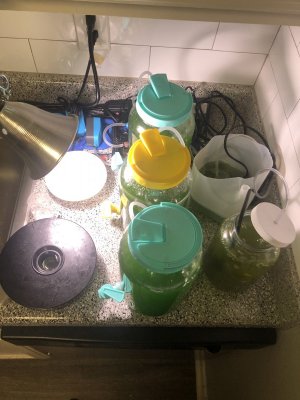
Last edited:
Very good point. The density/pore structure plays a major role in its denitrification abilityThere are two purposes for live rock in an aquarium.
1. It provides the necessary microbes (Bacteria & Archaea) to maintain water quality and the health of your livestock. The amount of rock needed to accomplish this goal is surely pretty low, so low that "pounds of rock per gallon" seems like the wrong unit. Perhaps "ounces of rock per tank".
2. It provides the necessary internal surface area for those microbes to live. Weight is irrelevant for this criteria -- the densest materials actually have the least internal surface area... in other words, the heavier, the worse. A tank piled full of 100 pounds of crappy mined base rock (which has effectively zero internal porosity) probably has less internal surface area than a tank with a couple pieces of real live rock (i.e., dead coral skeletons).
So yeah, I think the rules should be changed to ignore weight altogether, and yeah, I think most newer tanks these days are not using enough live rock.
IMO the rule should be: a small amount of high quality (=from the ocean) live rock, plus a moderate amount of very high porosity rocks (=dead coral skeletons). Any artificial or mined rock in the tank should probably be completely ignored from the functional perspective, and only used for decorative purposes.

Live rocks porosity comparison | Aquaroche
 aquaroche.fr
aquaroche.fr
When I started my tank in 1971 we didn't use or even know about live rock so I, like everyone else used dead coral skeletons and none of our tanks were very healthy.
Over the years I kept adding living stuff from the sea including porous local NY rocks and mud.
Eventually, I started collecting rock in the topics by SCUBA diving. I carried it all home on my lap on the plane. Today they would shoot you for that for a variety of reasons.
But I think a tank should have as much live rock as possible and still have room for the fish to swim. I don't go by weight because if you collect, it, you don't weigh it.
Over time, I replaced much of my real rock with DIY rock only because I can build more interesting pieces but after almost fifty years, my tank has enough bio diversity especially because I still add mud and things from the sea.
I also feel live rock makes a tank more natural and I go for natural and not a "stick" garden of SPS although I do have some SPS. I just find LPS more interesting.
I never worried or cared about hitch hikers or diseases as that seems to be a non issue for me.
I don't remember when I took these pictures of my tank. Probably in the 80s or 90s. But I think the tank looked the most natural then.
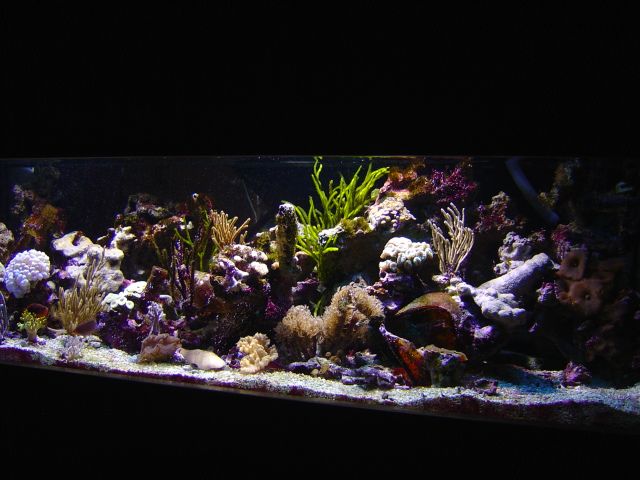
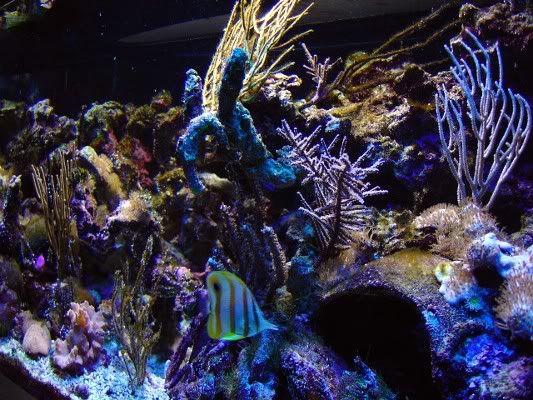
Over the years I kept adding living stuff from the sea including porous local NY rocks and mud.
Eventually, I started collecting rock in the topics by SCUBA diving. I carried it all home on my lap on the plane. Today they would shoot you for that for a variety of reasons.
But I think a tank should have as much live rock as possible and still have room for the fish to swim. I don't go by weight because if you collect, it, you don't weigh it.
Over time, I replaced much of my real rock with DIY rock only because I can build more interesting pieces but after almost fifty years, my tank has enough bio diversity especially because I still add mud and things from the sea.
I also feel live rock makes a tank more natural and I go for natural and not a "stick" garden of SPS although I do have some SPS. I just find LPS more interesting.
I never worried or cared about hitch hikers or diseases as that seems to be a non issue for me.
I don't remember when I took these pictures of my tank. Probably in the 80s or 90s. But I think the tank looked the most natural then.


- Joined
- May 27, 2020
- Messages
- 11
- Reaction score
- 27
As live rock farmers we specify the amount of live rock to be used by asking the amount of volume to be filled, then using the density of the particular rock to calculate the poundage required. Light density rock like the oolite we use (this does vary) or lace rock runs about 5 lbs per gallon, heavier rock like the drilled out shell rock (coquina) runs 7 lbs per gallon. I think about 25-35% of the tank volume in rock is about right, with at least half of that live.
It makes sense to use some live rock in a new setup to provide new tanks faster cycling, and lots of biodiversity for any system. We see conchs, shrimps, urchins, and even fish, etc. hatch out over a few weeks to over one year from installation.
Dead rock tanks are useless IMO, unless you want a fish only tank. The beauty of a reef tank is in capturing a small part of the ecosystem, where many species work together to rely on nothing but light input and water flow, no or little food required. Such a system captures the miracle of nature to educate and entertain us landlubbers. Instead of waiting a year to get coralline, why not get a flourishing ecosystem?

It makes sense to use some live rock in a new setup to provide new tanks faster cycling, and lots of biodiversity for any system. We see conchs, shrimps, urchins, and even fish, etc. hatch out over a few weeks to over one year from installation.
Dead rock tanks are useless IMO, unless you want a fish only tank. The beauty of a reef tank is in capturing a small part of the ecosystem, where many species work together to rely on nothing but light input and water flow, no or little food required. Such a system captures the miracle of nature to educate and entertain us landlubbers. Instead of waiting a year to get coralline, why not get a flourishing ecosystem?
Similar threads
- Replies
- 13
- Views
- 410
-
- Poll
- Replies
- 36
- Views
- 1,198
- Replies
- 3
- Views
- 248
- Replies
- 5
- Views
- 284


















